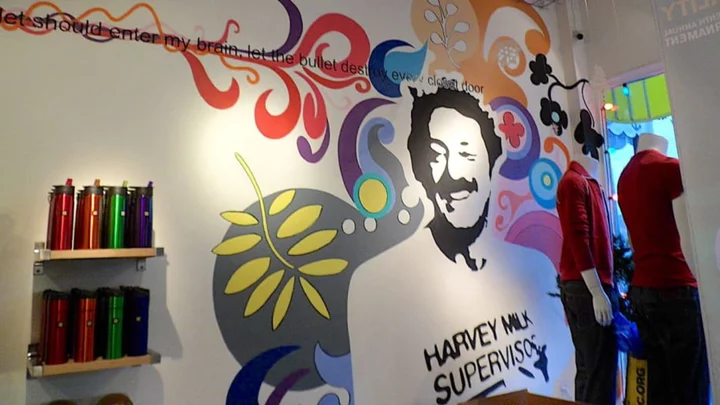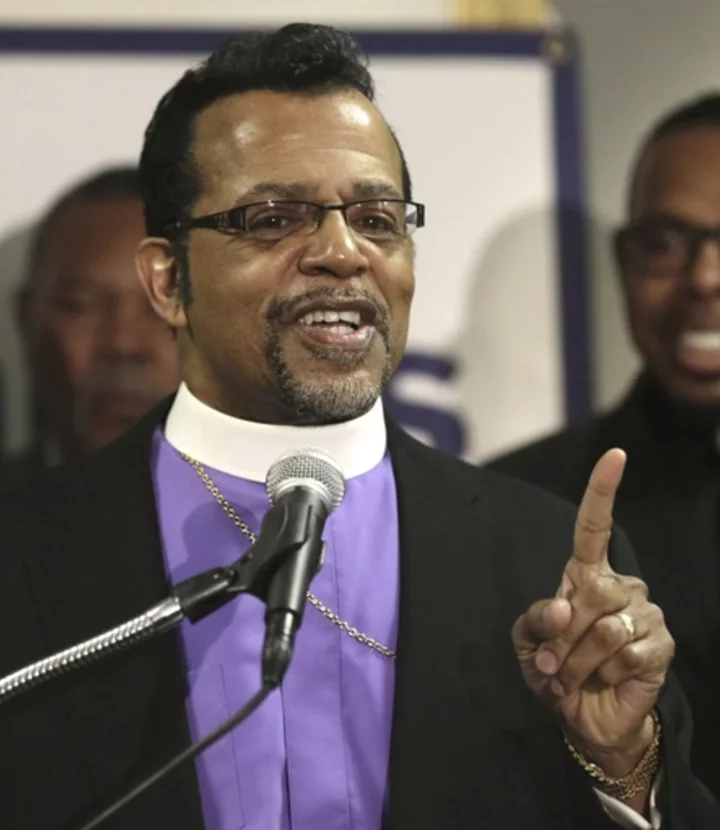On June 28, 1969, protests broke out at the Stonewall Inn in New York City following a police raid targeting gay patrons. Decades later, that incident is credited as the event that kicked off the modern gay liberation movement, and Stonewall is a now a national monument. The historic bar on Christopher Street is arguably the most famous LGBTQ rights landmark in the country, but it’s just one of many American sites that hold significance for the LGBTQ community. Here are a few worth visiting this June.
1. Castro Camera and the Harvey Milk Residence // San Francisco, California
San Francisco’s Castro District is one of the most famous historically gay neighborhoods in the United States. Harvey Milk, a member of the San Francisco Board of Supervisors and the first openly gay elected official in California, lived there from the early 1970s until his assassination in 1978. Today the house where he lived above his camera shop is a designated San Francisco landmark.
2. Transgender Memorial Garden // St. Louis, Missouri
In 2015, St. Louis activist Leon Braxton got the idea to plant a garden as a way of honoring and calling attention to trans victims of violence. Around 60 people got together that October to transform a vacant lot in the city into a small park with 34 trees, a butterfly garden, and a community circle. The Transgender Memorial Garden was the second of its kind in the world, following one built in Manchester, England, and it was the first one established in the United States.
3. Mattachine Steps // Los Angeles, California
The Mattachine Steps in Silver Lake are a distinctive Los Angeles landmark, but many people who recognize it may not be aware of its ties to LGBTQ history. Harry Hay was living next to the stairway when he founded the Mattachine Society in 1950. The organization was one of the first gay rights organizations in the country, and it played an important role in the LGBTQ civil rights movement’s early history. The stairs were renamed the Mattachine Steps in his honor in 2012 and today a sign marks the historic site.
4. Legacy Walk // Chicago, Illinois
The Legacy Walk in Chicago’s Lakeview neighborhood is an outdoor museum that highlights contributions to history and culture made by LGBTQ figures. Twenty rainbow pylons are installed over a half-mile stretch, with each pylon featuring bronze memorial plaques of noteworthy lesbian, gay, bisexual, or transgender individuals or an important event in LGBTQ history. The plaques feature some famous names, as well as many that have been ignored by history books.
5. Julius’ Bar // New York City, New York
Stonewall may be the most famous gay bar in New York City, but it isn’t the oldest. That distinction belongs to Julius’ Bar. Built in 1826 and functioning as a bar since 1864, it first gained a reputation as a watering hole that catered to gay clientele in the 1950s. In 1966, a group of activists held a “sip-in” at Julius’ to protest New York laws prohibiting eating and drinking establishments from serving gay people. The peaceful protest is considered a landmark moment in the LGBTQ civil rights movement.
6. The Black Cat // Los Angeles, California
Two years before the Stonewall Riots in New York City, protests in Los Angeles secured the Black Cat’s place in LGBTQ history. On New Year’s Eve 1966, plainclothes cops were waiting in the gay bar to catch men kissing at midnight, and when the clock struck 12, they beat and arrested 14 people for lewd conduct. Activists protested the violent incident a month later by picketing outside the Black Cat. The tavern was designated a historic-cultural monument by the city of Los Angeles in 2008.
7. Bayard Rustin Residence // New York City, New York
Bayard Rustin was instrumental in several social movements throughout his life. He participated in the civil rights movement in the 1960s, and even worked with Martin Luther King, Jr. to organize the March on Washington. In the 1980s, he fought for gay rights and drew attention to the AIDS epidemic. The influential Black and gay activist lived in the same apartment in Manhattan’s Chelsea neighborhood from 1962 to his death in 1987. Walter Naegle, Rustin’s former partner, still lives there, and he’s kept it almost exactly how it was in the 1980s. Today the apartment is registered as a national historic place.
A version of this article was originally published in 2019 and has been updated for 2023.
This article was originally published on www.mentalfloss.com as 7 LGBTQ Landmarks Besides the Stonewall Inn.









